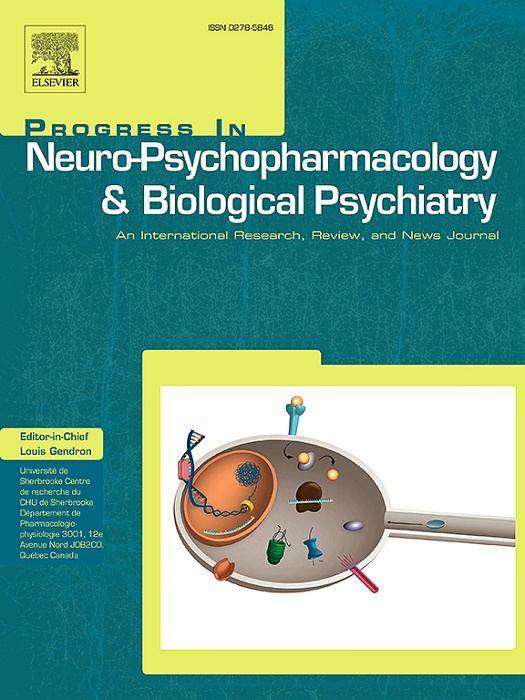Relationships and representations of brain structures, connectivity, dynamics and functions
IF 5.3
2区 医学
Q1 CLINICAL NEUROLOGY
Progress in Neuro-Psychopharmacology & Biological Psychiatry
Pub Date : 2025-04-02
DOI:10.1016/j.pnpbp.2025.111332
引用次数: 0
Abstract
The review explores the complex interplay between brain structures and their associated functions, presenting a diversity of hierarchical models that enhances our understanding of these relationships. Central to this approach are structure-function flow diagrams, which offer a visual representation of how specific neuroanatomical structures are linked to their functional roles. These diagrams are instrumental in mapping the intricate connections between different brain regions, providing a clearer understanding of how functions emerge from the underlying neural architecture.
The study details innovative attempts to develop new functional hierarchies that integrate structural and functional data. These efforts leverage recent advancements in neuroimaging techniques such as fMRI, EEG, MEG, and PET, as well as computational models that simulate neural dynamics. By combining these approaches, the study seeks to create a more refined and dynamic hierarchy that can accommodate the brain’s complexity, including its capacity for plasticity and adaptation.
A significant focus is placed on the overlap of structures and functions within the brain. The manuscript acknowledges that many brain regions are multifunctional, contributing to different cognitive and behavioral processes depending on the context. This overlap highlights the need for a flexible, non-linear hierarchy that can capture the brain’s intricate functional landscape. Moreover, the study examines the interdependence of these functions, emphasizing how the loss or impairment of one function can impact others.
Another crucial aspect discussed is the brain’s ability to compensate for functional deficits following neurological diseases or injuries. The investigation explores how the brain reorganizes itself, often through the recruitment of alternative neural pathways or the enhancement of existing ones, to maintain functionality despite structural damage. This compensatory mechanism underscores the brain’s remarkable plasticity, demonstrating its ability to adapt and reconfigure itself in response to injury, thereby ensuring the continuation of essential functions.
In conclusion, the study presents a system of brain functions that integrates structural, functional, and dynamic perspectives. It offers a robust framework for understanding how the brain’s complex network of structures supports a wide range of cognitive and behavioral functions, with significant implications for both basic neuroscience and clinical applications.
大脑结构、连通性、动态和功能的关系和表征。
这篇综述探讨了大脑结构及其相关功能之间复杂的相互作用,提出了多种层次模型,增强了我们对这些关系的理解。这种方法的核心是结构-功能流程图,它提供了特定神经解剖结构如何与其功能角色联系在一起的可视化表示。这些图表有助于绘制大脑不同区域之间的复杂联系,让我们更清楚地了解功能是如何从潜在的神经结构中产生的。该研究详细介绍了开发整合结构和功能数据的新功能层次结构的创新尝试。这些努力利用了神经成像技术的最新进展,如fMRI、EEG、MEG和PET,以及模拟神经动力学的计算模型。通过结合这些方法,该研究试图创建一个更精细和动态的层次结构,以适应大脑的复杂性,包括其可塑性和适应性的能力。一个重要的焦点放在大脑结构和功能的重叠上。该手稿承认,许多大脑区域是多功能的,根据环境的不同,有助于不同的认知和行为过程。这种重叠强调了对一种灵活的、非线性的层次结构的需求,这种层次结构可以捕捉大脑复杂的功能景观。此外,该研究考察了这些功能的相互依赖性,强调了一种功能的丧失或损害如何影响其他功能。讨论的另一个关键方面是大脑补偿神经系统疾病或损伤后功能缺陷的能力。这项研究探索了大脑是如何自我重组的,通常是通过招募替代的神经通路或增强现有的神经通路,在结构受损的情况下保持功能。这种代偿机制强调了大脑的显著可塑性,表明其适应和重新配置自身以应对损伤的能力,从而确保基本功能的延续。总之,该研究提出了一个整合了结构、功能和动态视角的脑功能系统。它为理解大脑复杂的结构网络如何支持广泛的认知和行为功能提供了一个强大的框架,对基础神经科学和临床应用都具有重要意义。
本文章由计算机程序翻译,如有差异,请以英文原文为准。
求助全文
约1分钟内获得全文
求助全文
来源期刊
CiteScore
12.00
自引率
1.80%
发文量
153
审稿时长
56 days
期刊介绍:
Progress in Neuro-Psychopharmacology & Biological Psychiatry is an international and multidisciplinary journal which aims to ensure the rapid publication of authoritative reviews and research papers dealing with experimental and clinical aspects of neuro-psychopharmacology and biological psychiatry. Issues of the journal are regularly devoted wholly in or in part to a topical subject.
Progress in Neuro-Psychopharmacology & Biological Psychiatry does not publish work on the actions of biological extracts unless the pharmacological active molecular substrate and/or specific receptor binding properties of the extract compounds are elucidated.

 求助内容:
求助内容: 应助结果提醒方式:
应助结果提醒方式:


